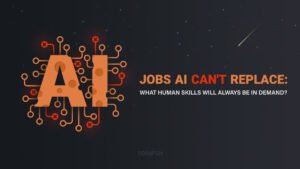AI-powered search engines are changing the way we find information online. One of the fastest-growing names in this space, Perplexity AI, has just made a big announcement: it will start sharing money with publishers whose articles are used in its AI answers.
This move could completely change how AI companies and traditional media work together — and it comes at a time when AI is facing serious legal and ethical questions.
The Big Announcement
Perplexity has launched a new subscription plan called Comet Plus, priced at just $5 a month. Here’s the important part:
-
80% of the money from Comet Plus subscriptions will go to publishers.
-
That adds up to a $42.5 million pool set aside for media companies.
-
Publishers will earn money if their content is cited or linked when Perplexity gives users an answer.
Think of it like this: if you ask Perplexity a question and the AI shows information from The Wall Street Journal or TIME, those publishers will get a share of the revenue.
Why This Is a Big Deal
For years, publishers have been frustrated with AI tools. Their articles often get pulled, summarized, and shown to users — but the original media outlets get little or no benefit.
Perplexity’s new model changes that. It:
-
Recognizes the value of original reporting.
-
Gives publishers a new way to earn money from AI.
-
Could set a new standard for other AI players like Google and OpenAI to follow.
The Legal Pressure
This decision didn’t just happen out of goodwill. Perplexity AI is under heavy legal pressure from big media companies:
-
News Corp Lawsuit (U.S.): News Corp (owner of The Wall Street Journal and New York Post) has sued Perplexity, saying the company used its reporting without permission. A U.S. court recently rejected Perplexity’s attempt to dismiss the case.
-
Japanese Publishers: Nikkei and Asahi Shimbun, two of Japan’s biggest newspapers, are suing for around ¥2.2 billion (≈ $15 million) each, accusing Perplexity of copying their content and damaging credibility.
These lawsuits have made it clear: AI companies need to work with publishers, not against them.
How It Will Work
Here’s the simple version:
-
A user asks Perplexity a question.
-
The AI finds information and shows it, citing the publisher.
-
If your article is cited, you (the publisher) get a share of the revenue.
-
80% goes to publishers, 20% stays with Perplexity.
This is very different from Google’s ad-driven model. Instead, it’s closer to how Apple News+ or even Spotify share money with content creators.
Reactions from the Industry
The media world is divided:
-
Some are excited, calling this a much-needed step that gives publishers a fairer deal.
-
Others are cautious, wondering if the money is enough to make up for the web traffic they lose when people read AI summaries instead of visiting news websites.
Perplexity already has partners like TIME, Fortune, Der Spiegel, The Independent, Los Angeles Times, and Le Monde. The new Comet Plus program is expected to bring even more publishers on board.
How Perplexity Differs from Google and OpenAI
-
Google relies almost entirely on advertising.
-
OpenAI has struck individual content deals (with AP, Axel Springer, etc.).
-
Perplexity, on the other hand, is betting on subscriptions and creative formats like “sponsored follow-up questions.”
Right now, ads make up less than 0.1% of Perplexity’s revenue — so the company is clearly going all in on this subscription model.
What This Could Mean for the Future
This plan could be a test case for the AI industry:
-
If it works, it could prove that AI companies and publishers can share value fairly.
-
If it doesn’t, there will be more calls for strict laws and regulations.
Either way, one thing is clear: AI cannot thrive without respecting and rewarding the people who create the original content.
Final Thoughts
Perplexity AI’s $42.5 million revenue-sharing move isn’t just another product update — it’s a turning point for AI and media. With lawsuits piling up and publishers demanding fairness, this model could set the tone for the future of AI-powered search.
The relationship between AI platforms and traditional media is no longer optional. It’s becoming the foundation of how online information will be shared — and how journalism will survive in the AI age.





